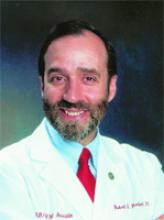In the “old” days, there was no easy road. Medicine took priority over all other commitments, including family. Beeper and night call were fellow travelers.
Many medical students today, however, view medicine as a career path in which personal lifestyle and family commitments take precedence.
This value change has popularized a new career destination, where work hours are well controlled and reimbursement relatively high. To get there, many choose the “EasyROAD”—Emergency medicine, Radiology (diagnostic and radiation), Ophthalmology, Anesthesiology, and Dermatology. As these specialties surge ahead, those that are compensated less and that require more beeper and night call time, such as family practice and internal medicine, are falling behind.
Many authorities believe the percentage of American medical school graduates competing for specific specialties reflects the attractiveness of the specialty. For example, of the major specialties participating in the National Resident Matching Program, family practice and internal medicine are the least popular choices for US graduates (TABLE). In contrast, many of the EASY ROAD specialties have the greatest percentage of applicants.
Obstetrics and gynecology falls somewhere in the middle. The bad news is that the trend in our specialty is negative, with 89% of positions filled by US graduates in 1997, declining to 75% in 2000 and 65% in 2004.
The most popular specialties are characterized by relatively high compensation and a well-defined weekly work schedule with little night call.1
TABLE
Positions available and % filled, by specialty, in the 2004 Residency Matching Program
| SPECIALTY | % POSITIONS FILLED BY US GRADUATES | # PGY 1 AND PGY 2 POSITIONS AVAILABLE |
|---|---|---|
| Plastic surgery | 94 | 79 |
| Orthopedic surgery | 92 | 594 |
| Neurosurgery | 86 | 65 |
| General surgery | 85 | 1,044 |
| Diagnostic radiology | 83 | 981 |
| Dermatology | 81 | 294 |
| Emergency medicine | 78 | 1,295 |
| OB/GYN | 65 | 1,142 |
| Psychiatry | 63 | 1,020 |
| Internal medicine | 55 | 4,751 |
| Family practice | 41 | 2,864 |
| PGY = postgraduate year | ||
Obstacles in our path
How can we improve compensation and work hours in obstetrics and gynecology? Policies that reduce the cost of practice—especially liability costs—would help considerably. One especially desirable solution is to reform the professional liability system by adopting California’s Medical Injury Compensation Reform Act, better known as MICRA, throughout the United States. This would likely stabilize and lower professional liability expenses.
Other strategies include making professional liability insurance for obstetricians a direct “pass-through” to insurers. In this scenario, increases in liability insurance would be directly followed by increases in professional reimbursement.
Increasing reimbursement for the most commonly performed procedures in obstetrics and gynecology is another way to increase revenues.
Night call and early morning rounds are not prominent features of EasyROAD specialties. In emergency medicine, for example, the clinical work week is limited to about 30 hours a week. Shifts average 12 hours, with little or no beeper call. In dermatology, there are essentially no late-night hours.
Long hours are notorious in the field of obstetrics. Alternatives could improve this pattern. Some large obstetrical groups have already lowered the maximum shift to 12 hours. The advantages? Clinicians are well rested and senior obstetricians are able to continue their careers without the burnout that years of intense call schedules can bring on. Does an easier road have pitfalls? One is that patients are unlikely to develop a deep personal relationship with a single obstetrician.
Other ways of controlling work hours in obstetrics include the hospitalist model of care and use of nonphysician providers, such as nurse-midwives.
Changing the standard obstetrical shift to 12 hours would signal a cultural change for obstetrics, and there would be disadvantages. But it would beckon more medical students, and would point to continued strength in the specialty’s future.


